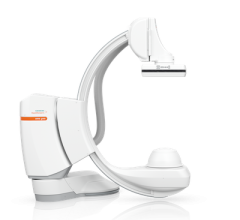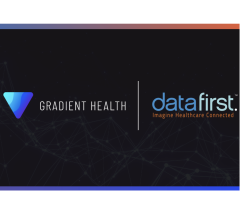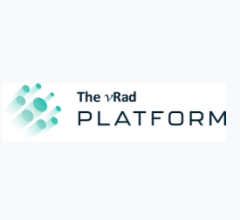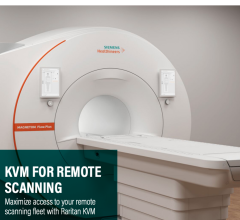
Image courtesy of Agfa Healthcare
A battle is raging in imaging IT today. Once a profitable hunting ground for traditional picture archiving and communication system (PACS) firms, new market entrants from the content management, archiving and informatics market are looking to disrupt the status quo. Pushing “deconstruction,” “reconstruction” and “distributed” multi-vendor imaging IT models, they have grabbed the attention of healthcare providers.
However, traditional PACS vendors have also been expanding their offerings, pushing “enterprise imaging” solutions (bundled viewer, workflow, dashboarding and archiving) as an upgrade to their stand-alone PACS offerings. The below offers a summary of the key findings from the new report: “Imaging IT and Archiving and Management IT — World — 2017,” published by Signify Research, to investigate the adoption of new imaging IT models.
Enterprise Imaging on the Rise
One of the clearest findings from the report shows that single-vendor, enterprise imaging IT looks set to significantly increase its share of the market. Over the next five years, we forecast enterprise imaging revenue to more than double globally, by far the fastest growing segment in the market. But what is driving this trend and what does it mean for new models offered by non-PACS suppliers?
Incumbent Advantage
Traditional PACS vendors have the largest installed base of stand-alone PACS, RIS and CVIS software in the market today. This is a clear advantage as healthcare providers see many positives from upgrading their departmental solution to enterprise imaging, including: perceived speed and lower expense of implementation with same vendor; less training required for staff and clinical disruption with similar user interface and system; perceived lower IT administration and professional service; single platform approach is perceived to aid workflow efficiency; relatively broad clinical coverage and capability; and easier to work with single vendor (“one throat to choke”).
Additionally, the core strengths of enterprise imaging solutions fit the needs of the largest addressable market segment, the mid-size hospital. Combined with many providers in the large and small hospital segment, these customers form the core of the traditional PACS vendor installed base. Today there is far greater focus on efficiency, workflow and speed of implementation given the current pressures on healthcare funding in this sector. With a single vendor enterprise imaging platform, it is perceived that these core needs can be better addressed than with a multi-vendor, best-of-breed model.
For best-of-breed vendors pushing a deconstructed multi-vendor model, this limits their addressable market. Best-of-breed clinical specialists increasingly find themselves pushed out of most enterprise deals today, especially with an incumbent PACS vendor. Their mainstay opportunities instead are academic providers willing to accept the longer and more expensive implementation required with multi-vendor deconstructed models, though these tend to be less frequent in comparison.
Changing Provider Power Base
A change in decision-making power within health provider procurement is also impacting the way that imaging IT strategy is decided, especially in North America. Centralization of IT administration as provider networks have expanded created a new powerbase for procurement. Archiving and management vendors have been quick to exploit this in the largest networks. Vendor neutral archives (VNAs) and independent clinical archives (ICAs) from specialist vendors are more advanced in capability in most instances. These can connect different departmental imaging IT systems to centralize image management and storage at far lower cost than a complete replacement of all imaging IT.
Following this success, archiving and management vendors are also eyeing the clinical realm, developing their own clinical modules for viewing, workflow, clinical review and even diagnostic capabilities. By using their foundation of the application content layer in a health provider’s stack, they are trying to push into front line clinical and diagnostic use. Moreover, they are looking to use the power of the CIO in enterprise provider IT procurement as leverage to adopting their solutions.
Clinical Breadth Still Important
However, clinical and diagnostic capability is the mainstay of traditional PACS vendors, with decades of clinical expertise in diagnostics and a breadth of tools in many clinical applications. Our research with industry vendors from across all product types has highlighted that for many providers, clinical breadth of solution remains a major factor in decision-making. This has so far limited independent archiving and management firms from any real success with their clinical or diagnostic capabilities, as most have far less clinical breadth than traditional PACS firms. Moreover, many traditional PACS vendors have now developed or acquired archiving and management capability for their enterprise imaging products. By doing so, this removes the need for standalone solutions from non-PACS competitors, especially in the mid and small provider segments where advanced imaging management and archiving capability is less important.
The Bigger Picture
When considered in the wider market context, enterprise imaging from the largest PACS vendors has a further advantage, often overlooked. Healthcare budgets are being squeezed and this is forcing a change in procurement, especially towards bundling of hardware and services in long-term managed service contracts. Most of the major PACS vendors are also imaging modality vendors, as well as offering a host of other clinical hardware and software across the clinical sector. In bundling their portfolio together with their enterprise imaging IT solutions, they can offer advantages from a cost perspective. These deals tend to be more aggressive on pricing, especially as long-term deals become more common, as they “lock-in” customers and with it, future revenue. Consolidation to a single vendor in this way is also perceived by providers to offer greater benefits in maintenance, support and integration.
For many providers, the perceived positives offer the best mid-term solution to meet their cost and efficiency goals, while limiting disruption. The single vendor enterprise imaging approach may lead to future challenges with regards to interoperability and content management of images and data down the line, especially when dealing with unstructured content or complex information exchange between providers. While this remains to be seen and further evolution of imaging IT models should be expected, it looks like enterprise imaging will be winning the lion’s share of revenues in the near and mid-term future.
Steve Holloway with the U.K.-based healthcare market intelligence firm Signify Research.
Related Enterprise Imaging Content:
RSNA Technology Report 2017: Enterprise Imaging
VIDEO: Technology Report: Enterprise Imaging 2017
VIDEO: Building An Effective Enterprise Imaging Strategy
Five Steps for Better Diagnostic Image Management
VIDEO: Enterprise Imaging and the Digital Imaging Adoption Model
VIDEO: Defining Enterprise Imaging — The HIMSS-SIIM Enterprise Imaging Workgroup


 December 09, 2025
December 09, 2025 









